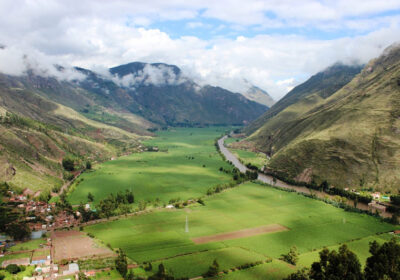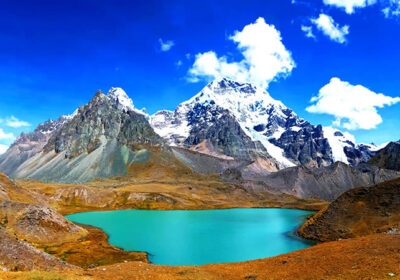
Hiking Packing List
Preparing the right luggage for a trekking route in Cusco is essential as it guarantees a safe and comfortable experience. In this article we will talk about the luggage you should bring when you go trekking. Remember to bring an ergonomic backpack, clothing suitable for the different climates, and sturdy shoes for hiking.
Table Of Content
- Travel bag and backpack
- Trekking Backpack
- Travel Bag
- Documents
- Identity card or passport (required)
- Clothing
- Underwear
- Hiking T-Shirt
- Waterproof jacket
- Thermal Jacket
- Pajamas
- Outer Gloves
- Mountain boots (important)
- Sneakers (hiking shoes/sandals)
- Hiking Socks
- Sleeping Bag
- Hat to protect from the sun
- Sunscreen
Don’t forget to bring your important documents, such as your passport or a valid identity card, as well as a hat, sunscreen and warm clothing. Finally, a sleeping bag for the cold nights will complete your luggage for exploring Cusco’s majestic trails.
Are you ready for the adventure of your life? Read on and discover in this guide what you should bring to make your experience unforgettable. You will travel from the awe-inspiring ruins of Machu Picchu to the vibrant streets of Cusco, the Colored Mountain, the Humantay Lagoon, and many other places of interest. Come and live the magic of Peru, where every step you take brings you closer to the history, culture and natural wonders that this beautiful country has to offer. Don’t forget that we are waiting for you in Cusco!
Travel bag and backpack
Trekking Backpack
A good backpack is essential for any trek. It is best if it has a capacity of 10 kilos and several compartments for easy access to your things. Make sure it has lumbar support, adjustable sternum straps, and a hip belt to distribute the weight properly.
And if you are traveling during the rainy season, it is essential that it has a built-in or attached rain cover to protect your belongings.
Travel Bag
In addition to your main pack, it’s a good idea to carry a duffel for items you won’t need on the trail, such as extra clothing, electronics, and other items you’ll use before or after the hike. Make sure it is wide and easy to carry.
Documents
Identity card or passport (required)
It is essential to carry an identity card or passport at all times, not only because it is required to enter sites such as Machu Picchu, but also for any procedures in hotels or in case of an emergency. Keep a digital copy in your email or in a secure application in case you lose the original.
Clothing
Underwear
Invest in underwear, preferably synthetic. They can also be sports underwear, which are ideal for intense activity because they manage moisture and prevent odor. Make sure they are comfortable and do not irritate with the constant movement of running.
Hiking T-Shirt
Choose trekking shirts that are as light and quick absorbing as possible. In this case, you can’t use cotton T-shirts because they absorb moisture, while other T-shirts will dry quickly and keep you cool. Hiking shirts usually offer UV protection, which is important at high altitudes where the sun is more intense.
Waterproof jacket
In the Cusco region, where rain is frequent and often unexpected, a waterproof jacket is a must. Look for a jacket that is both waterproof and breathable, with taped seams for added protection. Make sure it has an adjustable hood and external pockets that are easy to access.
Thermal Jacket
This jacket will protect us in areas with low temperatures, so a good quality thermal jacket is essential as it will keep your body warm. Materials such as high-tech synthetics provide excellent insulation while remaining lightweight and compressible, so look for a jacket that does.
Pajamas
Pajamas can be very comfortable and can help improve your sleep on cold nights or after a long walk. I recommend choosing one that is soft and warm, but also breathable to prevent excessive sweating.
Outer Gloves
They are perfect for protecting your hands from the cold, especially in the morning and evening or when you are at high altitudes, so good gloves are essential. Choose gloves that are waterproof, insulated, and allow for flexibility when holding poles or handling other gear.
Mountain boots (important)
Choosing the right hiking boots is crucial to enjoying a safe and comfortable trek. These boots should provide ankle support and be wide enough to handle difficult terrain. Waterproofing is essential due to unpredictable weather, while a good grip on the sole provides stability on slippery surfaces.
It is important that boots are comfortable, snug and breathable to keep your feet dry and prevent blisters. Investing in a good pair of boots will enhance your trekking experience and allow you to explore Cusco’s beautiful landscapes with confidence and safety.
Sneakers (hiking shoes/sandals)
Comfortable slippers or sandals are ideal for moments of rest in the camp or in less demanding places, as your feet will thank you. These slippers or sandals should be lightweight and dry quickly.
Both types of footwear should be comfortable and suitable for a safe and comfortable experience with your feet and during your adventure.
Hiking Socks
They should be made of a material that absorbs moisture quickly (wool or synthetic blends) and be cushioned, preferably high. Specific hiking socks help prevent blisters and provide comfort during long hikes.
Sleeping Bag
Depending on the season, you should bring a sleeping bag that will protect you from the night temperatures. Sleeping bags are classified by temperature or by the material they are made of, so choose one that is suitable for Cusco’s climate.
Choose one that has good thermal insulation, is light and easy to carry, and is suitable for the climatic conditions of the place. Sleeping bags come in different types, such as synthetic or down filled, each with its own advantages in terms of warmth, weight and moisture resistance.
Hat to protect from the sun
A hat to protect your face and neck for any excursion in Cusco, as the sun can be very strong, especially at high altitudes. It’s best if it’s light and breathable to keep you cool and has a strap so it doesn’t blow away in the wind.
Sunscreen
Choose a broad-spectrum sunscreen with an SPF of 50 or higher. Reapply every two hours and after sweating or swimming to maintain protection throughout the day.
Carrying the right items not only protects you from inclement weather and the challenges of the trail, but also ensures that you can enjoy the experience without mishaps. From choosing the right backpack to the right footwear to the right sunscreen, every element of your pack is critical to the success of your expedition.























No Comment! Be the first one.